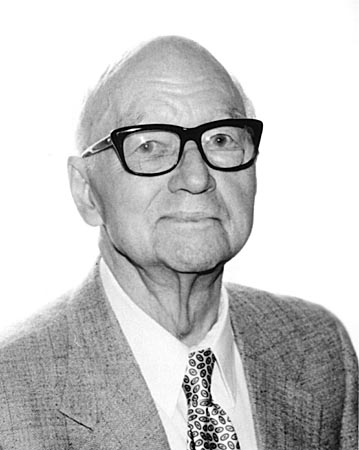Mr. Kellett was born in Neenah, Wisconsin, in 1899. Following his graduation as a chemical engineer from the University of Wisconsin in 1922, Mr. Kellett began working for Kimberly-Clark Corporation at the Atlas Mill in Appleton, Wisconsin. Moving rapidly into supervisory responsibilities, he was placed in charge of the Kimberly-Clark Experimental Mill in 1925. In 1930, he entered the consumer products division of the company and served as superintendent of the Niagara Falls, New York, mill. Mr. Kellet returned to Neenah in 1937 to become the manager of the two consumer products mills, Lakeview and Badger-Globe. He became the assistant general superintendent of all manufacturing operations in 1941. In 1942, he was named general superintendent.
After serving as a director, an assistant vice president, vice president in charge of manufacturing, and executive vice president, Mr. Kellett was elected president of Kimberly-Clark Corporation in Chicago, Illinois. He retired from that position in 1964 and remained a director until 1969.
During his 42-year career with the company, Mr. Kellett was dedicated to improving the performance of paper machines. He is credited with 12 different patents involving paper machine functions. A most significant contribution was his invention of a method of pressure forming to increase machine speed, which initiated the development of higher speeds in today’s high-speed tissue machines.
Mr. Kellett received an honorary doctor of science degree from the University of Wisconsin in 1965. He was described as an industrialist, a scientist, an educator, a citizen, and a humanitarian.
Also in 1965, then governor of Wisconsin, Warren Knowles, appointed him head of a committee on Improved Expenditure Management. Through Mr. Kellett’s ability to enlist people to become involved, 83 top-rated specialists from numerous Wisconsin companies were able to bring about a $500,000 savings for the state treasury. Always known as a “people person,” Mr. Kellet was also instrumental in bringing together 532 “business partners for more efficient government,” saving the state $34 million. In 1966, he was named chairman of Reorganization of Wisconsin State Government committee, and with the needed expertise, the number of state agencies was reduced from 96 to 28. In 1966, Mr. Kellett was appointed chairman of the governor’s Commission on Education. His achievements brought him the University of Wisconsin – Oshkosh Beta Gamma Sigma award, and he was named to the business society’s Hall of Fame.
At the age of 96, Mr. Kellett became one of the first honorees of the Paper Industry International Hall of Fame. At that time, he was living in his beautiful home on Winnefox Point at the mouth of the north branch of the lower Fox River on Lake Winnebago — a home he built in 1925. He died in 1997.




